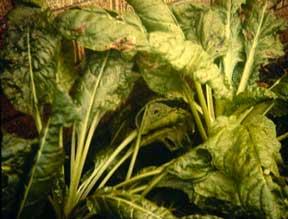
Vegetable
The damaged leaves are unmarketable. One larva may feed on more than one leaf. Leafminer attack vegetables such as tomato, cucumber, and celery. Sometimes they also attack lettuce and parsley in the greenhouse but cause less damage to similar vegetables grown in the field.
Use row covers. Remove host weeds (chickweed, lambsquarter, nightshade). Do deep spring plowing or rototilling to bury overwintering pupae, remove attacked leaves, and apply insecticides (recommended in your state) on eggs before they hatch into larvae.
Home gardeners should cut out the attacked area of leaf and use the rest of the leaf especially on Swiss chard.